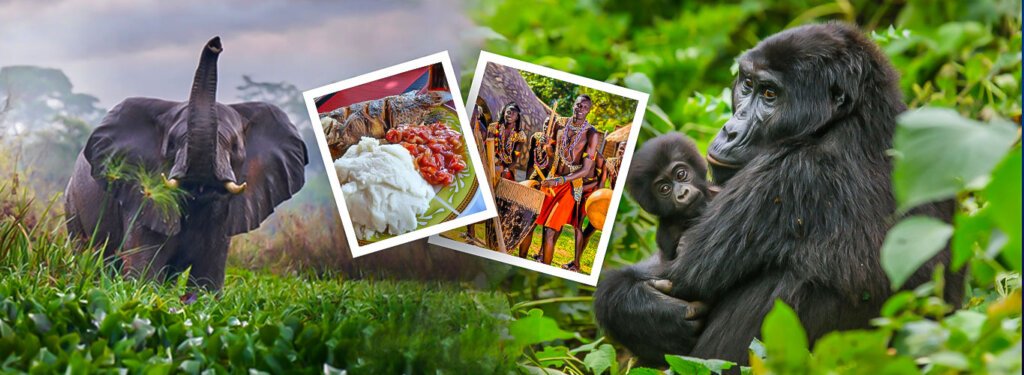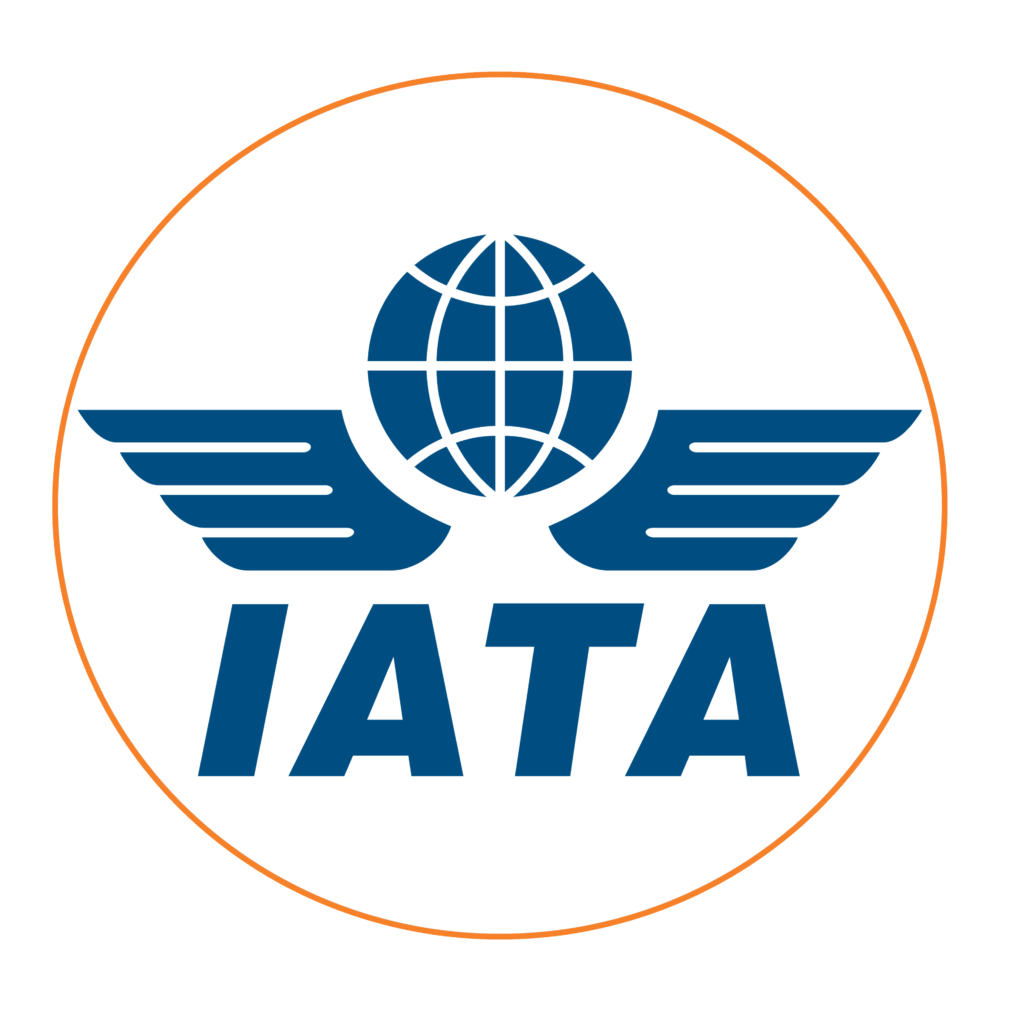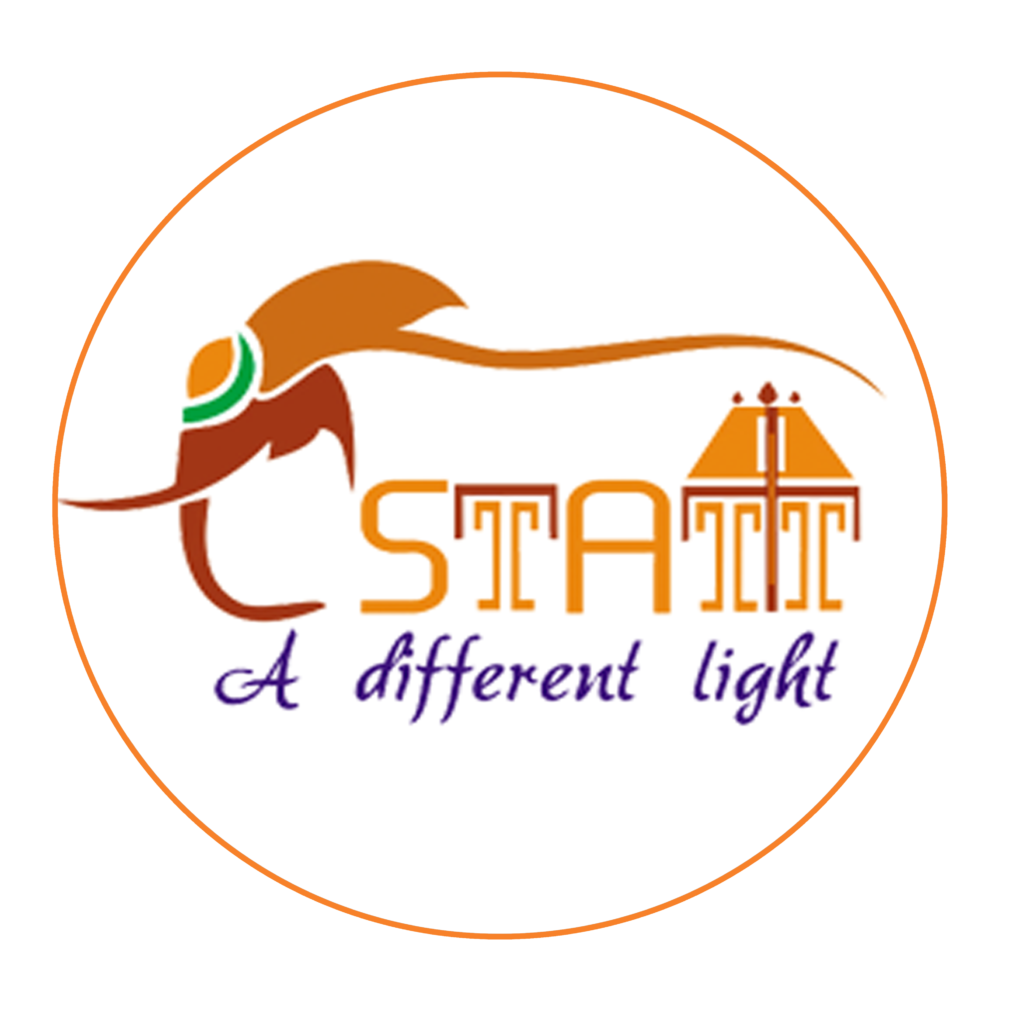Uganda & Rwanda Tour packages

South India's No. 1 Travel Agency ✨
💱 Currency
Ugandan Shilling (UGX) & Rwandan Franc (RWF)
🗣️ Languages
Uganda: English & Swahili (official), Rwanda: Kinyarwanda (official)
🌤️ Climate
15°C – 28°C (varies by region and elevation)
📅 Best Season
June – September (Long Dry Season – best for trekking and safaris) December – February
🛡 Must-Know Travel Tips for Visiting Uganda & Rwanda
- 🏧 ATMs are accessible in major towns and cities but may not always support all international cards. Use ATMs located inside banks for safety and reliability. Always carry some cash when traveling to rural areas.
- 💳 Credit & Debit Cards are accepted at upscale hotels, restaurants, and travel agencies—especially in Kampala and Kigali. In rural areas, local markets, or smaller businesses, cash is preferred.
- 🏦 Bank Hours are generally Monday to Friday, 8:30 AM to 4:00 PM. Some banks open on Saturday mornings. ATMs operate 24/7, but cash availability may be limited in remote areas.
- 🍷 The legal drinking age in Uganda & Rwanda is 18.
- 🤝 emphasizes politeness and modesty. Handshakes are a common greeting. Respect for elders and traditional customs is important, especially in villages and local communities.
- 💰 Bargaining is common in craft markets and with local vendors. Prices in supermarkets and modern stores are fixed.
What Are Uganda & Rwanda Famous For? – About Uganda & Rwanda Explained
Uganda and Rwanda, two remarkable nations in East-Central Africa, are known for their incredible biodiversity, vibrant cultures, and welcoming people. Renowned as the “Pearl of Africa,” Uganda captivates visitors with its vibrant ecosystems, teeming wildlife, and scenic diversity, including the majestic Lake Victoria.Its unique location at the intersection of the East African savannah and Central African rainforest creates a rare blend of ecosystems that supports a stunning range of flora and fauna. It’s one of the few places in the world where you can see endangered mountain gorillas in the wild, particularly in the Bwindi Impenetrable Forest, a UNESCO World Heritage Site.
Rwanda, though smaller in size, is known as the “Land of a Thousand Hills” due to its rolling terrain and picturesque scenery. The country is celebrated for its progressive policies, gender equality, and environmental stewardship. Kigali, Rwanda’s capital, stands out as one of Africa’s cleanest and safest cities, impressing visitors with its modern infrastructure and strong sense of civic pride. Rwanda has also made a global mark with its efficient governance and a powerful story of resilience following the 1994 genocide, which has transformed the country into a beacon of reconciliation and unity.
Both countries offer a combination of unforgettable wildlife encounters, eco-tourism, and cultural depth that captivates every traveler. Tourists can explore savannahs teeming with elephants and lions, mist-covered mountains home to gorillas and golden monkeys, and communities that showcase rich traditions through music, dance, and art. From the vibrant street life of Kampala to the peaceful lakeside towns like Gisenyi, every region offers something unique.
In recent years, Uganda & Rwanda tour packages have become increasingly popular among eco-conscious and culturally curious travelers. These packages often include curated experiences such as guided safaris, gorilla trekking, scenic hikes, and visits to cultural villages. Whether you’re looking for adventure, relaxation, or meaningful cultural exchange, a well-planned Uganda & Rwanda tour plan offers something for every kind of traveler—from solo explorers to honeymooners and family groups alike.
Uganda & Rwanda Tour Packages
Most Chosen Uganda & Rwanda Tour Plans by Our Happy Customers
How Are India and Uganda & Rwanda Connected? – Cultural & Historical Ties
The ties between India and Uganda & Rwanda date back to colonial times, particularly during the British colonial administration in East Africa. A large number of Indians—mainly Gujaratis and Punjabis—were brought to the region as laborers to build the Uganda Railway in the late 19th and early 20th centuries. Over time, many of them stayed back, becoming successful entrepreneurs, traders, and industrialists, especially in Uganda. They contributed significantly to the country’s commerce, infrastructure, and retail economy, operating shops, mills, and transport services that became central to urban life.
Although many were expelled in the 1970s under the regime of Idi Amin, this was a temporary setback. Since the 1990s, the Indian community has made a strong comeback, aided by improved diplomatic relations and economic reforms. Today, Indian-owned businesses and shops are once again thriving, especially in Kampala, where Indian supermarkets, electronics stores, and spice shops are part of the everyday urban landscape. Indian doctors, teachers, and engineers are also contributing to the Ugandan economy and social development.
In Rwanda, the Indian diaspora is smaller but steadily growing, primarily made up of professionals and entrepreneurs. Indians are actively investing in key sectors like healthcare, ICT, pharmaceuticals, education, energy, and hospitality. India’s engagement with Rwanda has increased significantly in the last decade through high-level visits, trade agreements, and development cooperation projects. For example, India has funded vocational training centers, donated agricultural machinery, and extended lines of credit to improve infrastructure.
Interesting Things to Know About Uganda & Rwanda Before You Go
Travelers planning to visit Uganda and Rwanda should be aware of several practical aspects. English is widely spoken in both countries, along with Swahili in Uganda and French and Kinyarwanda in Rwanda. The currencies are the Ugandan Shilling (UGX) and the Rwandan Franc (RWF), and tourists should carry US dollars for easy exchange. Both countries are visa-friendly, especially through the East Africa Tourist Visa, which allows travel between Uganda, Rwanda, and Kenya on a single permit.Renowned for its tidy environment, Rwanda enforces a plastic bag ban and holds a monthly civic cleanup day known as “Umuganda”, which keeps streets and neighborhoods spotless. While Uganda is more chaotic and vibrant, Rwanda offers an organized and peaceful vibe. Internet access is widespread, and local SIM cards like MTN and Airtel ensure good connectivity for travelers.
What to Know Before Booking a Uganda & Rwanda Tour Package
When planning a tour that covers both Uganda and Rwanda, it’s essential to book early, especially if you’re interested in gorilla trekking, as permits are limited and highly sought after. A tour lasting between 8 to 12 days is ideal for covering major attractions in both countries. Gorilla trekking adventures are offered in Uganda’s Bwindi Impenetrable Forest and Rwanda’s Volcanoes National Park, with permits typically priced from $700 to $1500.Tours typically include 4×4 vehicles for road transfers, especially for safaris and mountainous areas. It’s advisable to choose guided experiences to ensure safety, comfort, and deeper cultural insights. Some packages also offer multi-country combinations, including Kenya or Tanzania, allowing for a broader East African experience. Booking through trusted operators ensures smoother logistics, reliable accommodation, and safe transport. Many tour operators curate custom Uganda & Rwanda tour packages for Indian travelers with dietary options, Hindi-speaking guides, and flexible scheduling.
Which Are the Best Budget Uganda & Rwanda Tour Packages?
Travelers on a budget can still experience the best of Uganda and Rwanda with affordable tour packages. One popular option is a 7-day Gorilla Trekking and Wildlife Safari that covers Uganda’s Queen Elizabeth National Park, Bwindi Impenetrable Forest, and Rwanda’s Volcanoes National Park and Kigali city. Another option is the 5-day Highlights of Rwanda tour, focusing on Kigali, Volcanoes National Park, and cultural experiences like the Iby’Iwacu Cultural Village. A 10-day Uganda Big Five and Gorilla Combo offers a thrilling experience that includes Murchison Falls, Kibale Chimpanzee Trekking, and Bwindi. Cultural travelers may enjoy a 6-day Uganda and Rwanda Cultural Tour that features community-based tourism, the Batwa experience, and visits to museums and memorials. These Uganda & Rwanda tour packages usually start from INR 1.2 to 2.0 lakhs per person, depending on group size, accommodation quality, and inclusions.
Quick Facts About Uganda & Rwanda – Geography, Wildlife & People
Uganda’s capital city, Kampala, is a dynamic urban hub known for its heritage landmarks and cultural vibrancy.. The country’s geography is diverse, with features like the Rwenzori Mountains, whose highest point is Margherita Peak at over 5,000 meters. Uganda is home to an incredible range of wildlife, including mountain gorillas, lions, elephants, chimpanzees, and hippos. National parks like Murchison Falls, Queen Elizabeth, and Bwindi offer varied ecosystems ranging from savannah to rainforest. Rwanda’s capital, Kigali, is one of Africa’s cleanest and safest cities. The country is landlocked, with volcanic mountains in the north, lakes like Lake Kivu in the west, and dense forests in the south. Rwanda’s national parks, such as Volcanoes, Akagera, and Nyungwe, protect gorillas, golden monkeys, buffalo, antelope, and hundreds of bird species. The people of Uganda and Rwanda are known for their hospitality and cultural pride. In Uganda, the Baganda are the largest ethnic group, while Rwanda is home to the Hutu, Tutsi, and Twa peoples. A well-structured Uganda & Rwanda tour plan usually includes visits to these diverse landscapes and interactions with local communities.
Uganda Rwanda Tour Packages
| High season | June to September (Long Dry Season – best for safaris & trekking) December to February (Short Dry Season – great for wildlife viewing) |
|---|---|
| Iconic Attractions | Bwindi Impenetrable Forest, Queen Elizabeth National Park, Murchison Falls, Lake Bunyonyi, Volcanoes National Park, Nyungwe Forest, Kigali Genocide Memorial, Lake Kivu |
| Popular Activities | Gorilla & Chimpanzee Trekking, Wildlife Safaris, Boat Cruises on the Nile and Lake Kivu, Cultural Village Visits, Hiking Volcanoes, Birdwatching, Canopy Walks in Nyungwe, Exploring Craft Markets |
| Visa | Visa required for Indian citizens Apply online via the East Africa Tourist Visa (valid for Uganda, Rwanda & Kenya) or through individual e-visas for each country |
| National Animal | Uganda: Grey Crowned Crane Rwanda: Mountain Gorilla |
| National Flower | Uganda: Desert Rose Rwanda: Red Rose |
| Famous Food | Luwombo , Isombe |
Top 10 Reasons Why Tourists Love Visiting Uganda & Rwanda
Visitors are continually amazed by the unique charm and allure of Uganda and Rwanda. The opportunity to go gorilla trekking is a life-changing experience, with encounters in the misty forests of Bwindi or the slopes of the Virunga Mountains. Chimpanzee trekking in Uganda’s Kibale Forest or Rwanda’s Nyungwe National Park provides another fascinating wildlife experience. Adventurous travelers can embark on thrilling hikes up active volcanoes like Mount Sabinyo and Mount Bisoke, rewarded with breathtaking panoramic views from their summits. Cultural tourism flourishes through immersive experiences such as engaging with the Batwa pygmies in Uganda or visiting traditional Rwandan heritage villages that showcase local customs and crafts.
Rwanda’s capital, Kigali, continues to impress with its exceptional cleanliness, organized streets, and progressive atmosphere.In comparison, Uganda enchants travelers with majestic waterfalls and peaceful lakes, with Lake Bunyonyi standing out as a scenic gem known as the “Switzerland of Africa.”Bird Watchers are in for a treat, as both countries are home to hundreds of species, including the elusive and iconic shoebill stork. Wildlife lovers can enjoy unforgettable Big Five safari experiences in national parks such as Akagera in Rwanda and Queen Elizabeth in Uganda, both teeming with biodiversity.
Road trips through lush tea plantations, rolling green hills, and sparkling lakes offer some of East Africa’s most scenic landscapes. Yet, beyond the natural beauty and thrilling adventures, it’s the genuine warmth and hospitality of the people that leave the most lasting impression on every traveler.
When Is the Best Time to Visit Uganda & Rwanda for Travel?
Dry seasons in Uganda and Rwanda provide optimal conditions for outdoor exploration, making them the perfect time for gorilla trekking and game viewing. The long dry season from June to September is considered the peak travel period, especially for gorilla trekking, chimpanzee tracking, and game drives in savannah parks like Queen Elizabeth, Murchison Falls, and Akagera National Park. During these months, trails are more accessible, skies are generally clear, and wildlife gathers around water sources, making animal sightings more frequent and photography more rewarding.
The short dry season, from December to February, is also an excellent time to visit, particularly for travelers looking to avoid crowds. This period still offers good visibility for wildlife and pleasant temperatures, making it ideal for combining trekking with cultural tours, especially in Rwanda’s hilly regions of Uganda’s crater lakes.
The rainy seasons, from March to May and again in October and November, bring lush green landscapes, full rivers, and blooming flowers, which appeal to birdwatchers and photographers. However, they can also make travel logistics more difficult—some rural roads may become impassable, and forest trails can get slippery. Despite this, the wet season is often referred to as the “low season”, offering discounted Uganda & Rwanda tour packages, fewer tourists, and greater availability of accommodation and permits. Some lodges even offer off-season incentives, making it a good time for budget-conscious travelers.
Rwanda, with its higher altitude and temperate climate, remains relatively comfortable year-round. In contrast, Uganda’s weather can be more variable depending on region—lowland areas tend to be hotter and more humid, while highlands are cooler, especially at night. Packing light layers, waterproof shoes, and rain gear is essential if traveling during or near the wet season.
Visitors interested in local culture and festivals may want to time their trips with events like KigaliUp Music Festival (usually in July), Umuganda (the last Saturday of each month), or Uganda’s Nyege Nyege Festival (September)—a global music and arts celebration that draws performers and audiences from across the continent.
To avoid last-minute stress, travelers should book gorilla permits, safari lodges, and domestic flights well in advance, particularly during the June–September and December–February windows. Permits are scarce and tend to sell out quickly, often requiring reservations well ahead of time.
What Are the Best Things to Do in Uganda & Rwanda?
There’s no shortage of memorable experienceIn Uganda, the dense jungles of Bwindi Impenetrable Forest provide a rare opportunity to encounter mountain gorillas in their wild, natural surroundings. Safari drives in Queen Elizabeth and Murchison Falls National Parks allow travelers to spot lions, elephants, hippos, and more. Jinja, on the Nile River, offers white-water rafting, boat cruises, and bungee jumping. Stops at the Equator and key historical sites in Kampala offer a deeper connection to Uganda’s heritage. In Rwanda, gorilla trekking in Volcanoes National Park is the main draw, but the country also offers a powerful experience at the Kigali Genocide Memorial. The Canopy Walk in Nyungwe Forest and the peaceful shores of Lake Kivu offer unique nature experiences. Rwanda’s coffee and tea plantation tours around Gisenyi provide insight into rural life and sustainable farming. Most Uganda & Rwanda tour plan feature a mix of wildlife safaris, cultural exploration, and outdoor activities.
What Food Is Uganda & Rwanda Known For? – A Guide to Local Cuisine
With roots in a variety of cultural traditions, Ugandan food is known for its richness and the use of fresh, homegrown produce.Matoke, a dish made from steamed green bananas, is a national favorite often served with a rich peanut sauce, groundnut stew, or slow-cooked meat. It’s a staple in central and western Uganda, particularly among the Baganda community. Another beloved traditional delicacy is Luwombo, where chicken, beef, or groundnuts are cooked inside banana leaves along with spices, vegetables, and sometimes mushrooms. This dish is commonly served during important occasions, including family gatherings and marriage ceremonies. A must-try street food is the famous Rolex, a rolled chapati filled with eggs, onions, tomatoes, and cabbage. It’s quick, flavorful, and has become an iconic part of Ugandan culinary identity. Posho, a stiff maize porridge, is a staple that accompanies beans, greens, or meat stew, particularly in school meals and rural homes. Uganda’s regional flavors shine through dishes like Malewa from the east, crunchy Nsenene enjoyed during grasshopper season, and Lake Victoria Tilapia, served grilled or fried. In Rwanda, traditional dishes emphasize simplicity, sustainability, and deep-rooted traditions. Isombe, made from cassava leaves, is slow-cooked with peanut butter and spices, often served with boiled plantains or beans. Brochettes—skewered meats grilled over open flames—are widely loved and available at nearly every bar and roadside eatery. These are typically made from goat, chicken, or fish and served with fries or grilled bananas. Ugali, known locally as Ubugali, is similar to posho and is a main starch served with meat sauces or vegetable stews.
Another Rwandan favorite is Ibihaza, a hearty blend of pumpkin and beans simmered with onions and sometimes palm oil, reflecting the country’s farm-to-table culture. For those with a sweet tooth, Mandazi (fried dough snacks) and Akabenz (crispy pork chunks) are local favorites. In both countries, fruit is abundant—papaya, pineapple, passionfruit, and mangoes are fresh, affordable, and widely consumed.
In major cities like Kampala and Kigali, Indian restaurants are widely available, reflecting the influence of the Indian diaspora. You’ll find everything from north Indian thalis and tandoori platters to south Indian dosas and idlis. Vegetarian and Jain-friendly options are easily found in urban restaurants and hotels catering to international tourists. Some Uganda & Rwanda tour packages even include culinary tours or cooking classes where visitors can learn to prepare local dishes using indigenous ingredients.
Uganda Rwanda Tour Package
| Kampala City (Uganda) | Uganda Museum, Kasubi Tombs, Gaddafi Mosque, Ndere Cultural Centre, Craft Markets |
|---|---|
| Jinja – Source of the Nile (Uganda) | White-Water Rafting, Nile River Boat Cruises, Bungee Jumping, Mabira Forest, Speke Monument |
| Western Uganda – Safari & Nature Circuit | Murchison Falls, Nile Delta, Top of the Falls Viewpoint, Game Drives, Ziwa Rhino Sanctuary |
| Akagera National Park (Rwanda) | Big Five Game Drives, Lake Ihema Boat Safaris, Savannah Scenery, Birding, Sunset Lookouts |
| Lake Kivu Region (Rwanda) | Gisenyi Hot Springs, Beach Resorts, Coffee Tours, Boat Cruises, Kayaking |
| Nyungwe Forest National Park (Rwanda) | Canopy Walkway, Chimpanzee Trekking, Colobus Monkeys, Waterfall Trails, Birdwatching |
| Kigali City (Rwanda | Kigali Genocide Memorial, Inema Art Centre, Nyamirambo Women’s Tour, Kimironko Market, Kigali Convention Centre |
What Should Indian Travellers Know Before Visiting Uganda & Rwanda?
For Indian travelers, getting to Uganda and Rwanda is relatively straightforward, with convenient connections from major cities like Delhi, Mumbai, and Bengaluru via hubs such as Doha (Qatar Airways), Addis You can fly through Addis Ababa with Ethiopian Airlines, or connect through Nairobi using Kenya Airways or Air India. RwandAir also operates regional connections, making travel within East Africa smooth and efficient. Most travelers land in Entebbe International Airport (Uganda) or Kigali International Airport (Rwanda), both of which offer visa-on-arrival or e-visa facilities under the East Africa Tourist Visa, which covers Uganda, Rwanda, and Kenya in one permit.
It’s advisable to carry US dollars in small denominations, as they are widely accepted and easy to exchange at forex bureaus or hotels. Note that bills printed before 2009 are often not accepted. While credit and debit cards (Visa and Mastercard) are commonly used in urban hotels, restaurants, and malls, cash is essential for rural purchases, local transport, and markets. Mobile money platforms like MTN Mobile Money and Airtel Money are popular in both countries and can be used for paying bills and topping up airtime.
All visitors must be vaccinated against yellow fever and show proof via an international vaccination certificate on arrival. Additionally, taking anti-malarial medication and carrying mosquito repellents is strongly advised, especially if you plan to visit forested or rural areas. Travelers are encouraged to secure insurance that covers potential health-related incidents. When it comes to food and water, bottled or filtered water should be used for drinking and brushing teeth. Most urban restaurants and hotels offer vegetarian and Jain-friendly meal options, especially in cities like Kampala and Kigali where Indian cuisine is widely available. However, in smaller towns or while on safaris, vegetarian choices may be limited—so carrying some ready-to-eat packs or snacks from India can be a smart backup.
English is widely spoken in both countries, particularly in cities, hotels, and among tour guides. In Uganda, Swahili is also common, while in Rwanda, French and Kinyarwanda are widely spoken. Learning basic greetings like “Muraho” (hello in Kinyarwanda) or “Asante” (thank you in Swahili) is appreciated and can enhance your connection with locals.
Cultural etiquette is important. In rural areas, modest clothing is preferred—shoulders and knees should be covered when visiting villages, churches, or mosques. Respecting elders, asking before taking photos, and avoiding public displays of affection are considered polite practices. Fridays are holy days for Muslims in Uganda, especially in areas with large Muslim communities, so be mindful of prayer times and dress modestly.
For convenience and safety, Indian travelers are encouraged to book through trusted Uganda & Rwanda tour packages that handle transportation, permits (especially for gorilla trekking), accommodation, and guided excursions. Many of these packages also include Indian meals, Hindi-speaking guides, and flexible itineraries suited to family, solo, or senior travelers. Having a local guide can be invaluable for cultural interpretation and smoother logistics.
Where to Shop in Uganda & Rwanda – Best Markets & Souvenirs
Shopping in Uganda and Rwanda is a delight for lovers of crafts and local art. In Kampala, the Craft Market on Buganda Road is filled with wood carvings, batik paintings, woven baskets, and jewelry. One of East Africa’s biggest markets, Owino is a lively spot where shoppers can find anything from apparel to medicinal herbs. For upscale and artistic keepsakes, Banana Boat is a top choice. In Rwanda’s capital, the Caplaki Craft Village draws visitors with its array of woven baskets, pottery, and traditional masks. Meanwhile, Kimironko Market stands out as Kigali’s largest marketplace, celebrated for its bright fabrics and fresh produce.For contemporary art, Inema Arts Centre showcases local talent through paintings, sculptures, and installations. Travelers often bring home handmade items like tribal masks, beaded jewelry, banana fiber art, and bags of Rwandan coffee or Ugandan tea.
How Is the Art and Culture Scene in Uganda & Rwanda?
Uganda and Rwanda have rich and evolving art and cultural scenes. Traditional music and dance are integral to celebrations and ceremonies. In Rwanda, the Intore dance, with its fast-paced drumming and energetic movements, is a national treasure. Uganda’s Bakisimba dance, performed with drums and colorful costumes, is equally captivating. Festivals such as Nyege Nyege in Uganda and the Rwanda Film Festival attract global attention. Handicrafts, including basket weaving, wood carving, and beadwork, are popular in both countries. Museums like the Uganda Museum in Kampala and the Ethnographic Museum in Rwanda offer insights into local history, artifacts, and traditions. Contemporary art galleries like Inema in Kigali and Afriart in Kampala are shaping East Africa’s modern art scene, showcasing a new generation of African creatives. Art lovers can also find tailored Uganda & Rwanda tour packages that include studio visits and local art workshops.















